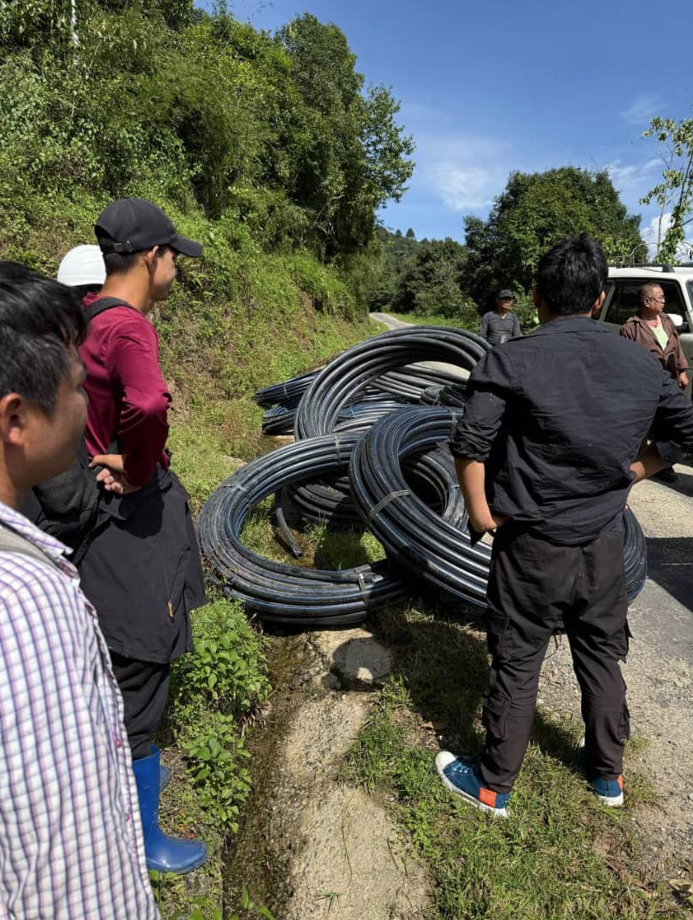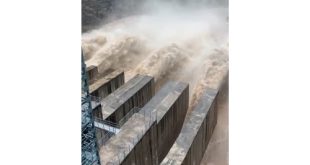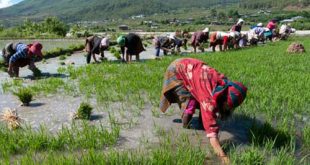Continuous heavy rainfall in Dagana on 4th and 5th October triggered flash floods that damaged the main water supply line, leaving residents without water for nearly a week. The floods washed away large portions of the pipeline and destabilized water distribution points, cutting off the main source of supply to the town and nearby housing colonies.
In response, District Engineer (DE) Jamyang, under the Dzongkhag Engineering & Human Settlement Sector, led a rapid restoration effort with his technical team. Despite harsh weather and difficult terrain, they managed to install temporary HDPE pipelines within just two to three days every 2 kilometers (km), laying connections every two km to ensure basic access to water for affected residents.

To manage the limited supply, authorities introduced a timed distribution system, with the town area receiving water in the morning hours and housing colonies supplied in the evening. Even so, residents struggled to meet daily needs such as cooking, washing, and sanitation during the first few days of the shortage. Many relied on nearby streams, rainwater collection, and shared taps to get by.
At present, a significant portion of the available water is being directed toward the ongoing Monlam Chhenmo, one of Dagana’s largest annual religious events. Thousands of devotees are attending the ceremony, prompting the dzongkhag to prioritize water supply to the venue to ensure smooth proceedings. After the event concludes, officials have assured that more water will be redirected to the residents, restoring regular household supply.
“We have managed to provide temporary access using HDPE pipelines, but these are not designed for long-term use,” said DE Jamyang, and he futher added, “By December, we expect to replace them with permanent pipelines to ensure a reliable and stable water supply system for the entire community.”
The Dzongkhag Engineering & Human Settlement Sector has already begun groundwork for the new permanent network, which will include durable pipes and improved safety structures to prevent future flood-related damage. Reinforcement of vulnerable water channels and protective embankments is also part of the upcoming plan.
Local residents expressed appreciation for the quick response and coordination between the engineering team and the dzongkhag administration. “It was difficult at first, but the engineers acted quickly. Within a few days, we at least had some water coming in,” said one resident, reflecting the community’s relief.
While the immediate crisis has eased, officials warn that the current setup remains temporary and could face disruptions if heavy rainfall continues. There is the need for climate-resilient and permanent water infrastructure in Bhutan’s flood-prone areas.
For now, Dagana residents are managing with the temporary supply and remain hopeful that by December, the new pipeline system will bring a lasting solution to the district’s water challenges.
 The Bhutanese Leading the way.
The Bhutanese Leading the way.




